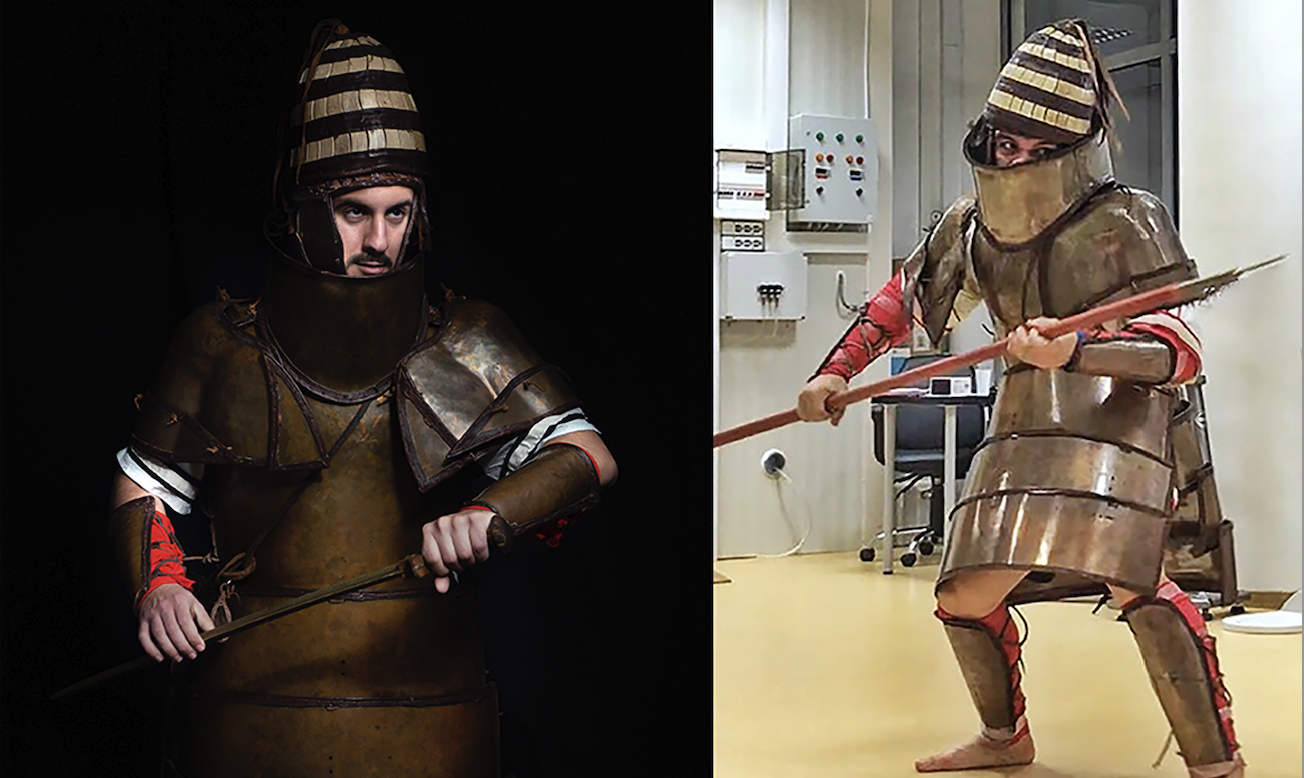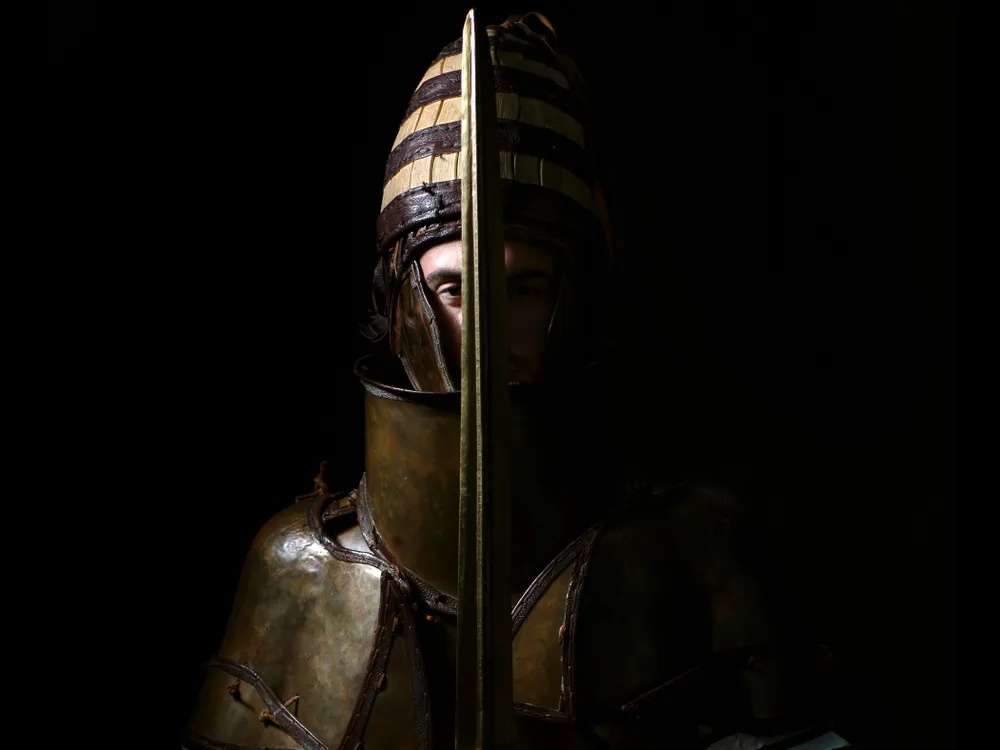

By Greek legislation, each male citizen over the age of eighteen should spend from 9 months to a yr within the Hellenic Armed Forces. As in each counattempt with such a policy of mandatory conscription, that is positively not a prospect relished by most conscripts-to-be. However then, it could’t be all dangerous, not less than for these enthusiasts of Mediterranean military history who happened to be serving when researchers from the University of Thessaly got here by provideing the prospect to don a swimsuit of armor from the fifteenth century BC and have a really — and religionfully — old-fashioned battle.
The replica was modeled on an examinationple from the late-Bronze-age Mycenaean civilization “discovered within the southern Greek village of Dendra in 1960,” writes Smithsonian.com’s Sonja Anderson, describing it as “one of many previousest complete fits of European armor in existence.”
Composed of fifteen “copper-alloy sheets held together with leather-based, which covered the damageer from neck to knees,” the swimsuit is “complete with arm and leg guards and a helmet decorated with items of boar tusk.” Clunky although it could look, it stands as evidence that, because the researchers put it of their paper, the “Mycenaeans had such a powerful affect in Eastern Mediterranean not less than halfly because of their armor technology.”
However first, they needed to put the armor itself to the check. “They gathered volunteers from the thirty second Marines Brigade of the Hellenic Military,” Anderson writes, “fed them the pre-battle meal of a Mycenaean soldier: bread, beef, goat cheese, inexperienced olives, onions and pink wine. The marines have been outmatchted in replicas of the Mycenaean swimsuit, given replicas of Mycenaean crucitype swords, and positioned in a temperature-controlled room set to a geographically accufee 64 to 68 levels Fahrenheit.” There commenced eleven hours of simulated battle, all “choreographed primarily based on descriptions of the Trojan Warfare from Homer’s Iliadvert, which was fought a number of centuries after the Dendra armor was made.”


“We now underneathstand, regardless of its cumbersome seemance at first sight, that it’s not solely flexible sufficient to permit nearly each transferment of a warfarerior on foot but additionally resilient sufficient to professionaltect the damageer from most blows,” the researchers write of their conclusion. And although their analysis subjects “confirmed a excessive level of fatigue, sore higher physique as a result of weight of the armor, and foot ache attributable to strolling, running, riding a chariot, and battleing nakedfoot,” it will need to have been a extra stimulating experience than the average day within the Hellenic Armed Forces — especially if there was any post-battle goat cheese and wine availin a position.
by way of Smithsonian Magazineazine
Related content:
What It’s Prefer to Actually Battle in Medieval Armor
Easy methods to Make and Put on Medieval Armor: An In-Depth Primer
Bronze Age Britons Turned Bones of Lifeless Relatives into Musical Instruments & Ornaments
Based mostly in Seoul, Colin Marshall writes and broadcasts on cities, language, and culture. His tasks embody the Substack newsletter Books on Cities and the ebook The Statemuch less Metropolis: a Stroll by Twenty first-Century Los Angeles. Follow him on Twitter at @colinmarshall or on Faceebook.
